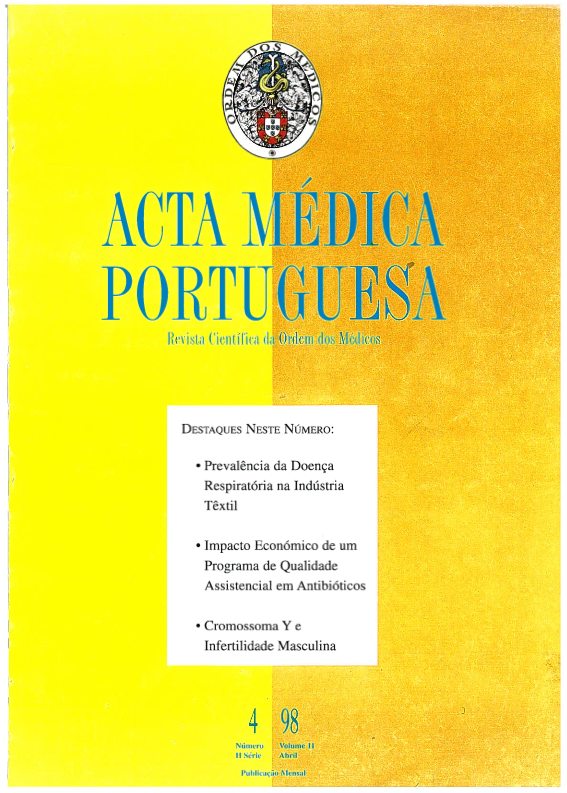Prevalência de doença respiratória na indústria têxtil. Relação com os níveis de empoeiramento.
DOI:
https://doi.org/10.20344/amp.2247Resumo
Many workers in the textile industry have respiratory symptoms that are related to their work environment. In this study we observed the dust level conditions of eleven textile industries of the North of Portugal. The dust levels determined were between 0.1 mg/m3 and 1.25 mg/m3, in many cases above the Portuguese standard levels of exposure (VLE). For these dust levels we found a prevalence of 23% of workers with respiratory symptoms with occupational characteristics in 10.8%, and 5.7% presenting byssinosis. Workers exposed to cotton fibres in spinning areas have the highest prevalence of symptoms, and reduction of the FEV1. These characteristics were related to dust levels and were higher in the initial phases of the spinning processes. We found no cases of byssinosis in workers exposed to synthetic fibres, or in workers from weaving areas. Smoking habits were related to the reduction of the FEV1, and severity of respiratory illness but not to the presence of byssinosis.Downloads
Downloads
Como Citar
Edição
Secção
Licença
Todos os artigos publicados na AMP são de acesso aberto e cumprem os requisitos das agências de financiamento ou instituições académicas. Relativamente à utilização por terceiros a AMP rege-se pelos termos da licença Creative Commons ‘Atribuição – Uso Não-Comercial – (CC-BY-NC)’.
É da responsabilidade do autor obter permissão para reproduzir figuras, tabelas, etc., de outras publicações. Após a aceitação de um artigo, os autores serão convidados a preencher uma “Declaração de Responsabilidade Autoral e Partilha de Direitos de Autor “(http://www.actamedicaportuguesa.com/info/AMP-NormasPublicacao.pdf) e a “Declaração de Potenciais Conflitos de Interesse” (http://www.icmje.org/conflicts-of-interest) do ICMJE. Será enviado um e-mail ao autor correspondente, confirmando a receção do manuscrito.
Após a publicação, os autores ficam autorizados a disponibilizar os seus artigos em repositórios das suas instituições de origem, desde que mencionem sempre onde foram publicados e de acordo com a licença Creative Commons









